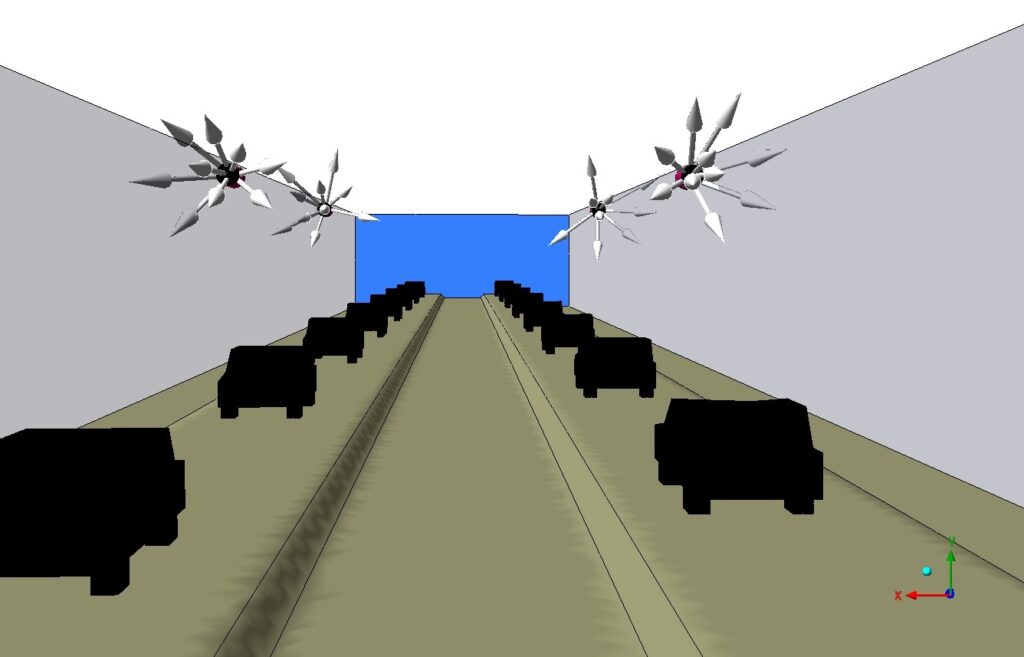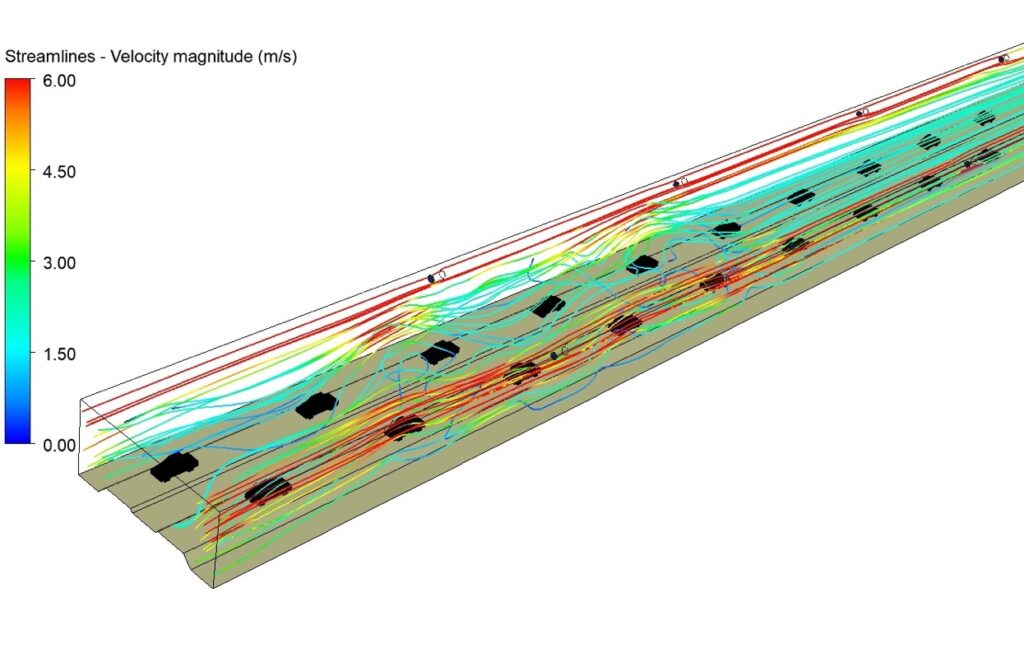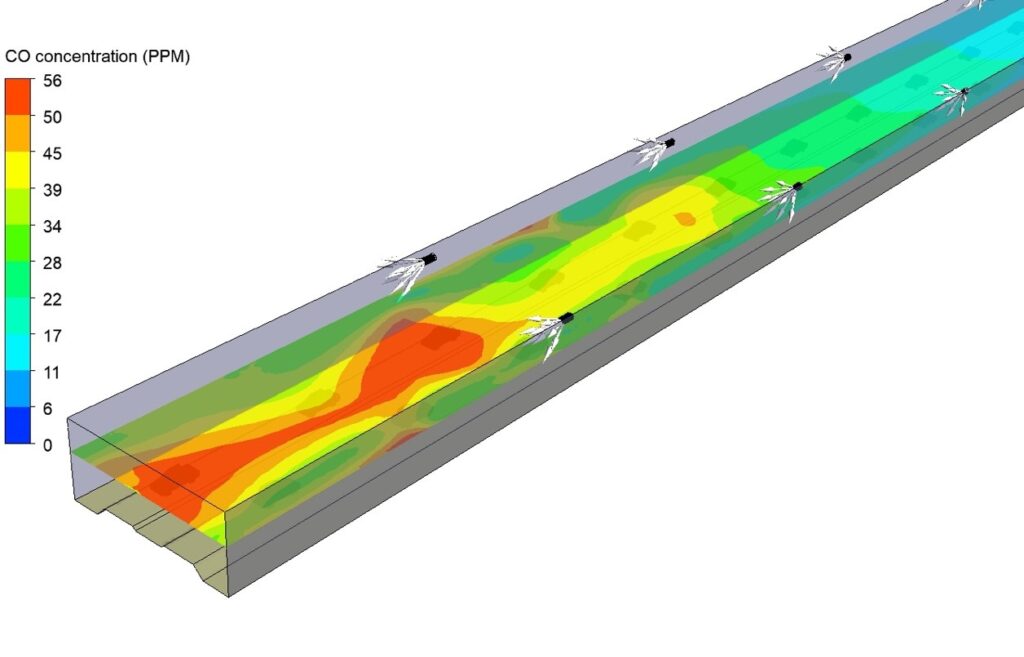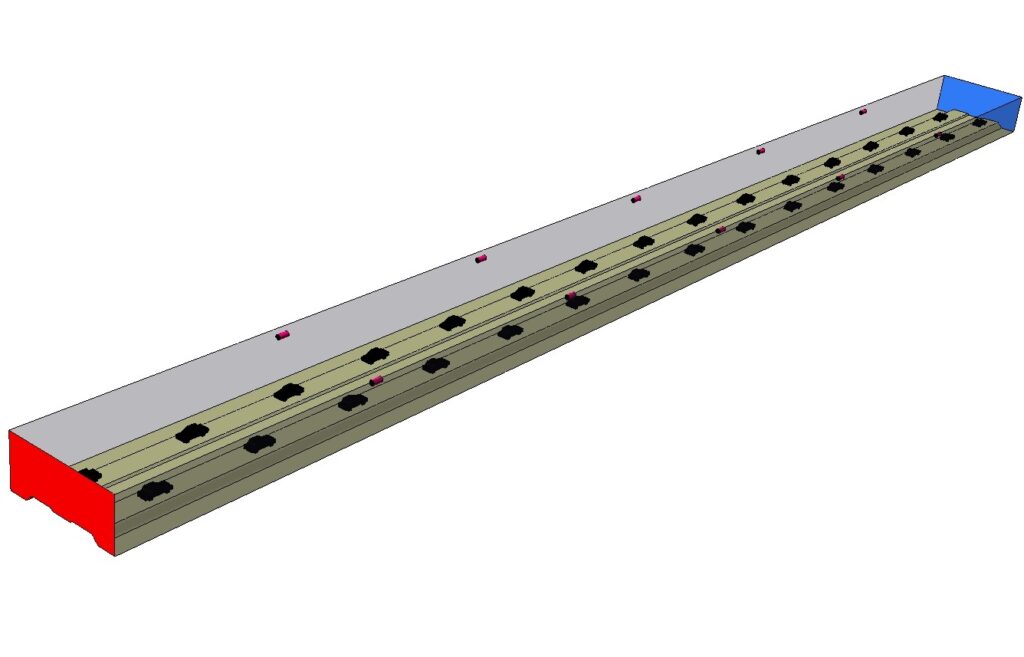Introduction
Road tunnels are essential components of modern infrastructure, facilitating the seamless flow of traffic in urban areas and across challenging terrains. However, their confined nature presents unique challenges, particularly in the event of fires. Fire and smoke pose significant risks, making safety a paramount concern. Computational Fluid Dynamics (CFD) analysis has emerged as a crucial tool in understanding and mitigating these risks, enabling engineers to design safer tunnels and develop effective emergency response strategies.

Understanding CFD Analysis
CFD is a branch of fluid mechanics that uses numerical analysis and algorithms to solve and analyze problems involving fluid flows. In the context of road tunnels, CFD is used to simulate the behavior of fire and smoke, helping engineers predict their spread and impact under various scenarios.
Key Components of Fire and Smoke CFD Analysis
- Fire Dynamics Simulation:
- Heat Release Rate (HRR): This is a measure of the energy released by the fire. It is a critical input for CFD simulations as it influences the temperature and smoke production.
- Fuel Characteristics: The type of materials involved in the fire affects the combustion process, influencing smoke production and toxicity.
- Smoke Behavior and Dispersion:
- Smoke Movement: CFD models predict how smoke travels through the tunnel, considering factors such as ventilation systems, tunnel geometry, and traffic conditions.
- Visibility and Toxicity: The simulation assesses how smoke affects visibility and air quality, crucial for evacuation and rescue operations.
- Ventilation Systems:
- Natural Ventilation: Utilizes the tunnel’s design and natural airflow to manage smoke.
- Mechanical Ventilation: Involves fans and other mechanical systems to control smoke spread and ensure clear escape routes.
- Emergency Response:
- Evacuation Modeling: CFD helps in planning and optimizing evacuation routes and procedures, ensuring that people can exit the tunnel safely and quickly.
- Firefighting Strategies: Simulations can evaluate the effectiveness of different firefighting tactics and equipment placement.


Applications and Benefits of CFD Analysis
- Design Optimization: Engineers use CFD to optimize tunnel design, ensuring that ventilation systems and safety measures are effective in controlling fire and smoke.
- Risk Assessment: By simulating various fire scenarios, CFD helps in identifying potential risks and weak points in the tunnel design.
- Regulatory Compliance: CFD analysis supports compliance with safety standards and regulations, providing evidence of the tunnel’s ability to handle fire emergencies.
- Training and Preparedness: Emergency response teams can use CFD simulations for training, improving their readiness and effectiveness in real-world scenarios.
Challenges and Future Directions
While CFD analysis offers significant benefits, it also presents challenges. Accurate simulations require detailed input data and considerable computational resources. Additionally, real-world conditions can be complex and variable, making it difficult to account for all possible scenarios.
Conclusion
Fire and smoke CFD analysis is an indispensable tool in the design and management of road tunnels. By providing detailed insights into fire dynamics and smoke behavior, it helps engineers create safer environments and develop effective emergency strategies. As technology advances, the role of CFD in tunnel safety will continue to grow, ensuring that these critical infrastructures can withstand the challenges posed by fire emergencies.
Reach out Graphler technology for a CFD Consulting Services .We are also specialized in Stress Analysis Services , Structural Design Services and more.


